Questões de Língua Inglesa da Fundação CESGRANRIO (CESGRANRIO)
Lista completa de Questões de Língua Inglesa da Fundação CESGRANRIO (CESGRANRIO) para resolução totalmente grátis. Selecione os assuntos no filtro de questões e comece a resolver exercícios.
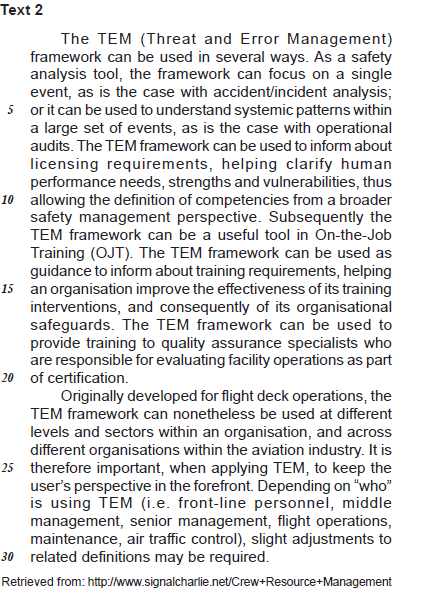
According to Text 2, the main purpose of TEM is to
- A.
enhance the safety of operations in aviation.
- B.
bring about a radical change in air traffic control.
- C.
improve commercial pilots training and performance.
- D.
report on the vulnerabilities that caused single accidents.
- E.
eliminate the need for operational audits with external experts.
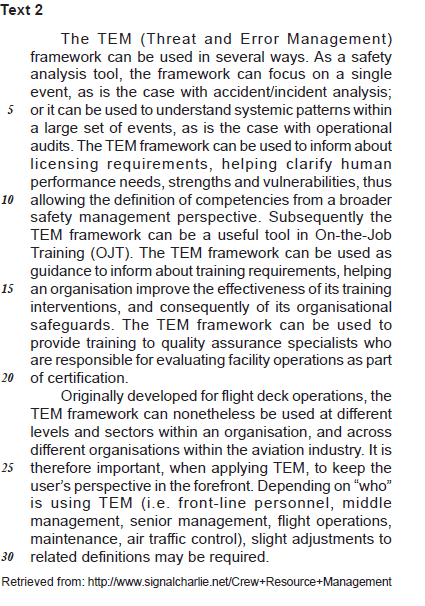
All the options below describe a link between TEM and professional training, EXCEPT
- A.
OJT sessions can be enhanced by applying TEM principles.
- B.
Experts in quality management in operations should learn the TEM framework.
- C.
The TEM framework can assist management in defining professional development needs for staff members.
- D.
TEM is an appropriate analysis procedure to define personnel training programs.
- E.
TEM will help operational auditors understand the systemic patterns of large scale accidents.
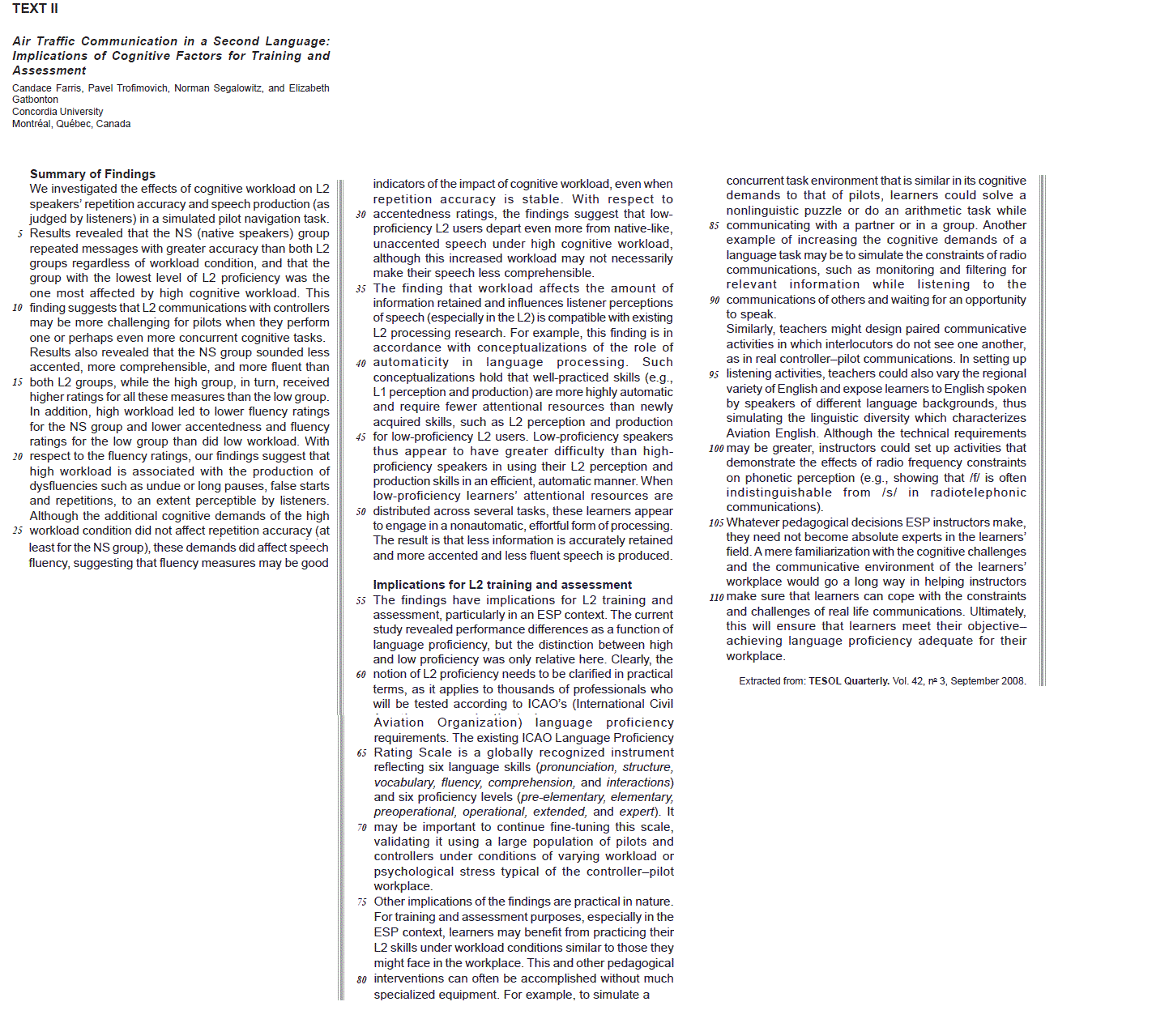
The main purpose of the research presented in the text is to
- A.
compare the level of L2 proficiency of pilots to that of native language speakers.
- B.
discuss the consequences of miscommunication between air traffic controllers and pilots.
- C.
comment on the effects of high cognitive overload on air traffic professionals who are native speakers of English.
- D.
investigate accentedness, comprehensibility and fluency in L2 controllers and pilots communicating among themselves.
- E.
report on the effects of L2 proficiency and workload on speech production and retention of information in pilot-controller interaction.
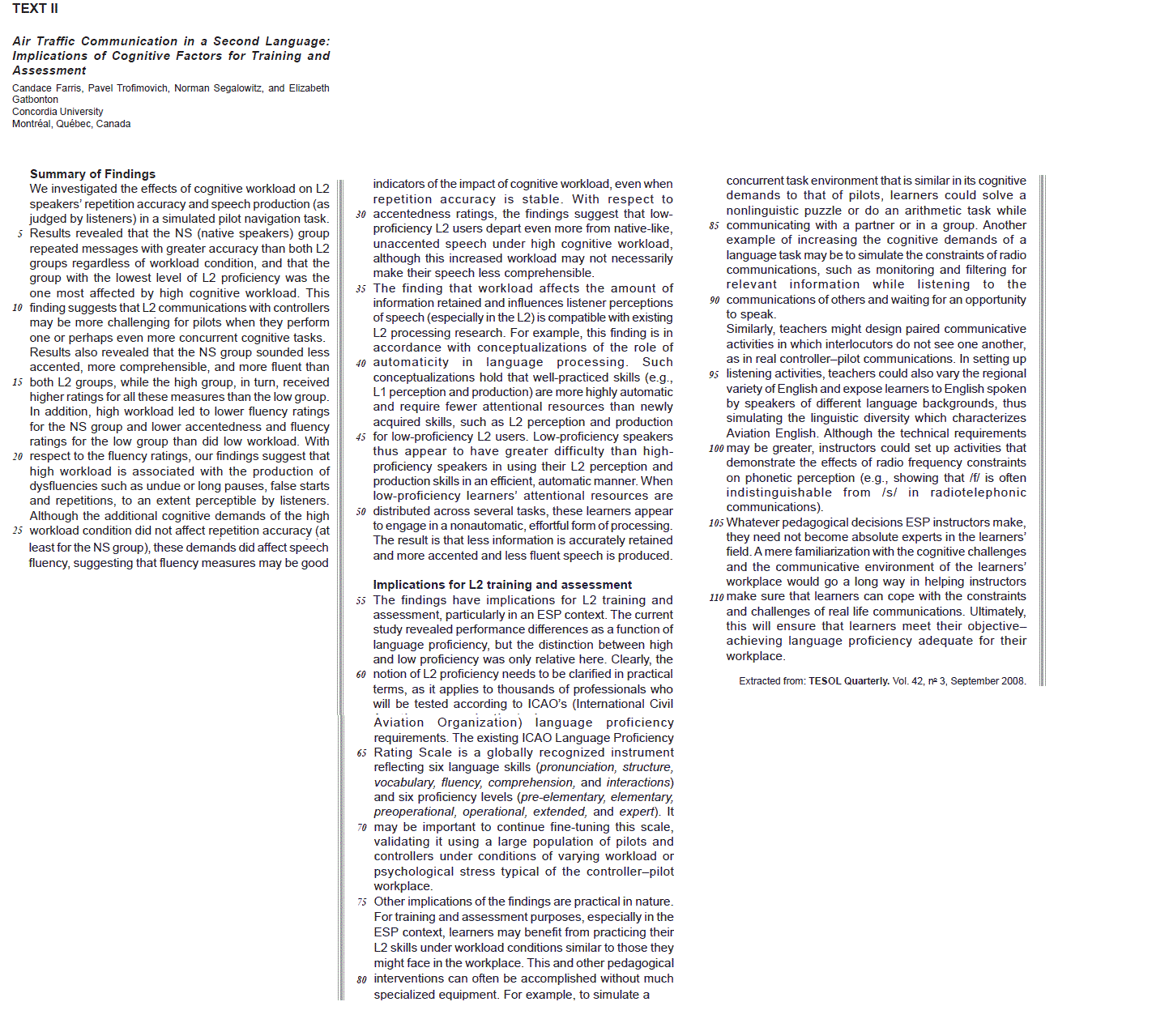
Choose the option that contains a correct correspondence between the verb in bold form and the idea it transmits.
- A.
these learners appear to engage in a nonautomatic, effortful form of processing. (lines 50-51) endorsement
- B.
Clearly, the notion of L2 proficiency needs to be clarified (lines 59-60) assertion
- C.
It may be important to continue fine-tuning this scale, (lines 69-70) permission
- D.
under workload conditions similar to those they might face in the workplace. (lines 78-79) advice
- E.
This and other pedagogical interventions can often be accomplished (lines 79-80) ability
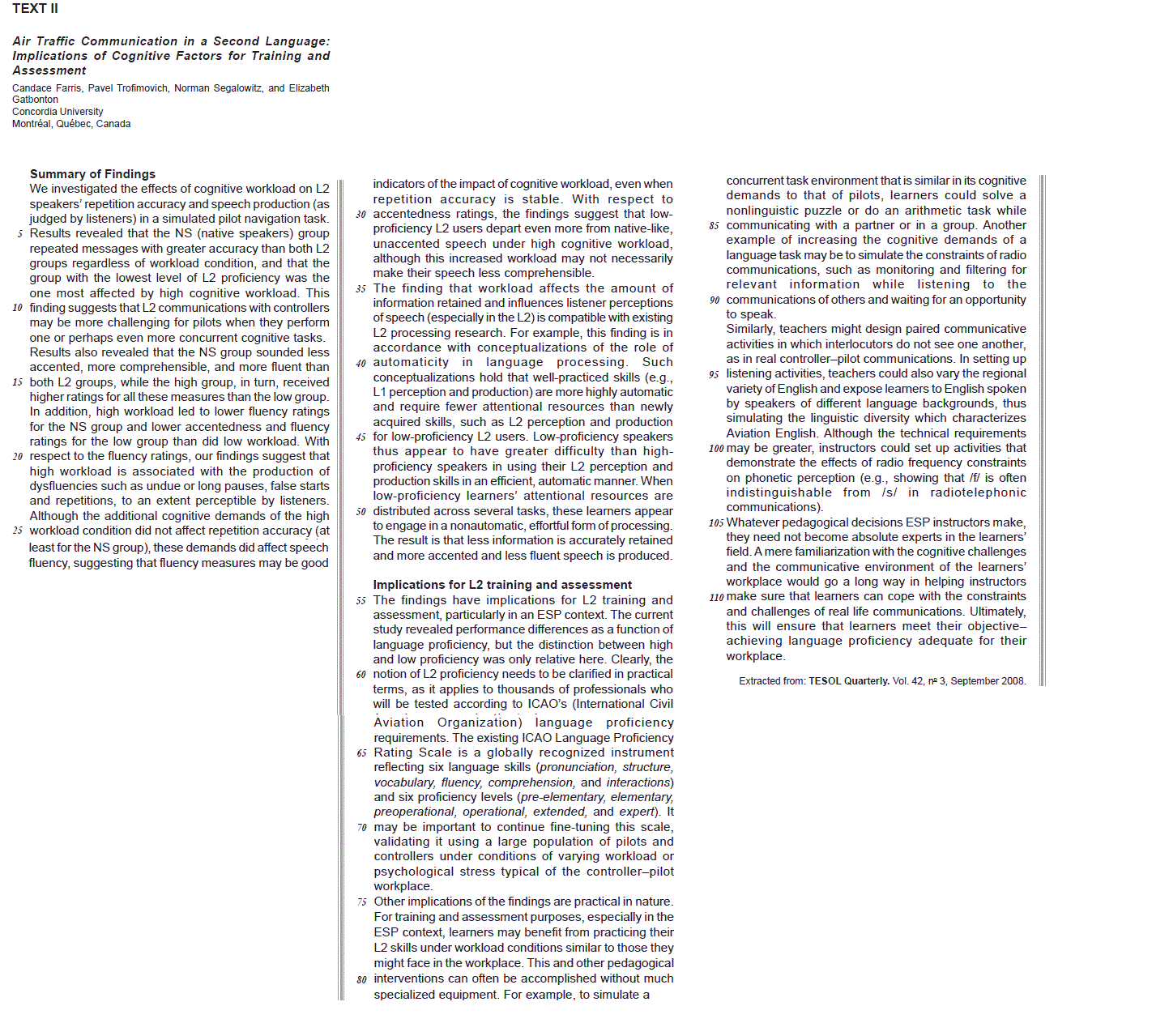
In paragraph 4 (lines 55-74), the authors mention that it may be important to continue fine-tuning the ICAO Language Proficiency Rating Scale because
- A.
it should take into account the different amounts of work or the psychological stress undergone by L2 pilots and controllers in their real life environment.
- B.
it does not cover as many language skills and proficiency levels as necessary to validate pilots and controllers performance in the L2.
- C.
it does not consider the ICAOs language proficiency requirements for aviation professionals.
- D.
the number of air traffic controllers and pilots who need to be tested is very large.
- E. the proficiency levels of the high L2 and low L2 groups are very different.
In the excerpt Other implications of the findings are practical in nature. For training and assessment purposes, especially in the ESP context, learners may benefit from practicing their L2 skills under workload conditions similar to those they might face in the workplace. (lines 75-79), the concept embedded in the use of the acronym ESP is appropriately described by:
- A.
English for Specific Purposes, comprehending the practicing of the language skills needed to behave adequately in the profession.
- B.
English for Scientific Professions, involving the learning of the language structures and lexicon used in science and technology.
- C.
English for Special Professions, teaching the aural-oral skills necessary to communicate in special professional fields.
- D.
English for Special Purposes, including teaching all 4 skills for students of different age and national backgrounds.
- E.
English for Specific Purposes, encompassing strategies to teach academic reading proficiency, exclusively.
In line 78, those refers to
- A.
Other implications of the findings... (line 75)
- B.
...training and assessment purposes, (line 76)
- C.
learners... (line 77)
- D.
...L2 skills... (line 78)
- E. ...workload conditions... (line 78)
In A mere familiarization with the cognitive challenges and the communicative environment of the learners workplace would go a long way in helping instructors make sure that learners can (lines 107-110), the expression in bold could be replaced by
- A.
suffice to help
- B.
not be able to help
- C.
be very successful in helping
- D.
require lengthy efforts to help
- E.
make long-lasting contributions to help
In the last paragraph (lines 105-114), the author suggests that
- A.
the communicative environment in the learners workplace does not reflect the challenges of real life communication.
- B.
learners will only meet their objective provided they are offered intensive language training and rehearsal in their workplace.
- C.
ESP instructors need to be fully knowledgeable in the technical skills required in the learners workplace.
- D.
ESP instructors are expected to have a general idea of the professional tasks and interactional needs of the learners without a thorough background in technical issues.
- E.
ESP instructors must develop an extensive knowledge of aviation as well as of Aviation English in order to help learners cope with the everyday challenges of their workplace.
Check the option that introduces an implication of the research study reported in Text 2.
- A.
It is not necessary to refine the scale of language proficiency within realistic scenarios.
- B.
It is pointless to monitor and extract relevant data from the communications of pilots and air traffic controllers.
- C.
There is an urgent need of highly-specialized equipment to simulate the workplace context for pedagogical purposes.
- D.
There must be lifelike L2 training and assessment in air traffic controllerpilot communication under workload conditions.
- E.
There is no link between performance dissimilarities and language proficiency in the communication between pilots and air traffic controllers.


